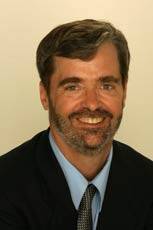Several months ago, I took note in this space of the then-fledgling loan scandal, and wondered how and why we have allowed college loans to become an industry rather than the government-funded program it ought to be. Since then, an investigation begun by New Yorks attorney general, Andrew Cuomo, has spawned similar inquiries in several other states. Prosecutors are trying to determine if colleges have improperly steered students to lenders, some of whom may have engaged in predatory lending practices.
While official inquiries still are in a preliminary stage, media investigations have uncovered horror stories about recent college graduates struggling to pay back six-figure loans, a task made even more burdensome by double-digit interest rates. In some of the reports I read, more than a few hard-pressed graduates sported degrees from Catholic institutions. Six-figure debt is hardly restricted to students with predictably expensive Ivy League degrees.
Apparently many students, being students, did not read all the fine print in their loan documents, and they were surprised when their adjustable interest rates ballooned to 12 percent and higher. The same predatory mentality that led financial institutions to underwrite subprime mortgages may be behind the burgeoning college-loan scandal.
Beyond the issue of our collective failure to provide more money for government loans, beyond the questionable lending practices and possibly unethical relationships between colleges and lenders, there is this question: What kind of society are we creating when college students leave school burdened with such huge debt?
For all our paeans to the importance of teachers, how many young people can afford to return to the classroom if they have to write checks of $1,000 or more every month just to service their college loans? For all our professed reverence for marriage and family, how many young people can even think about settling down when they are so deeply in debt? How many young people with six-figure student loans can afford to rent a living space of their own, never mind handle the additional burden of a mortgage? How many would-be writers, artists, social workers, musicians, public servants and research scientists will have to give up their dreams at the age of 26 because they cannot live on the less-than-munificent salaries such careers provide?
Were I of a conspiratorial mind, I might be inclined to believe that the financial services industry, with the tacit cooperation of higher education, is attempting to turn a generation of students away from liberal arts and the humanities by making it financially impossible to pursue anything but a career in business, financial services and the industries that support them. Not that theres anything wrong with being a commodities trader, or a public relations executive, or a corporate attorneyfar from it. Some of us in the non-profit world (a category that would include journalism in general and writing in particular) benefit from the skill, vision and leadership of American businessmen and women.
Still, the notion of a generation forced to the counting house because of crushing college debt ought to give us pause, and not just out of sympathy for the debtors. Our knowledge-based economy is as dependent on teachers, scientists, mathematicians and historians as it is on financial advisors, brokers and adjustors. Our culture requires young artists just as surely as our economy requires young entrepreneurs.
Friends tell me of children who wish to be journalists or math teachers or marine biologists but who are being encouraged to go to business school or law school in part so that they can afford to live an independent, adult life even as they dutifully pay down their debts. How sad is thatfor them, for their parents, and for society?
Making matters potentially far grimmer is the near certainty that a long period of steady economic growth without inflation seems destined to end soon. Thanks to low-cost imports and other efficiencies, increases in the cost of living have been held in check (except, of course, in housing) for more than two decades.
But, as anybody knows who has put a child through college in recent years, our collective chokehold on inflation has not extended to higher education. Tuition increases have outpaced inflation since the Reagan administration. What will happen if, or when, the cost of daily life begins to spikeaccompanied, as would seem inevitable, by even larger increases in the cost of nonpublic higher education?
It is becoming clear that private enterprise simply is not the answer to financing college education. As the horror stories from recent graduates indicate, private lenders are far too eager to view students as just another exploitable market.
Forget our dependence on oilour prosperity depends on the energy and creativity of our young people. And we will have precious little of either if their first and overriding concern is paying down their debt.








